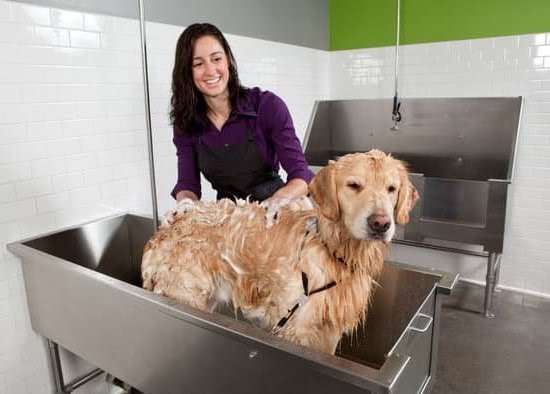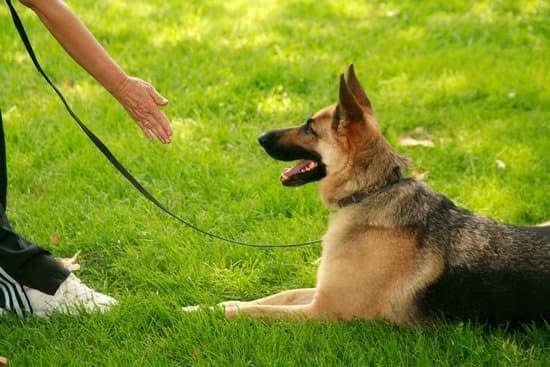Introduction
Barking is a natural behavior for dogs and is often used to communicate different messages. Unfortunately, barking can become excessive if the dog is not trained properly. That’s why it’s important to train a barking dog in order to deter excess noise, out of control behavior, and establish yourself as a leader in your home. By using positive reinforcement, consistency and patience, you can teach your pup how to bark only when necessary in appropriate situations.
The first thing to understand is that dogs bark for many reasons. Some dogs bark when they are happy or when they want attention while other dogs bark due to anxiety or stress. Regardless of the reason behind your dog’s excessive barking, it’s essential that you figure out what triggers them so you can redirect their behavior productively.
Once the underlying cause for your pet’s barking has been identified, it’s time to begin training them with positive reinforcement methods such as treats or praise. Start by rewarding your pup every time they stop barking either when given verbal commands or when triggered by specific circumstances like someone ringing the doorbell. This will help them associate good behaviors with rewards and decrease their motivation to bark unnecessarily.
In addition to positive reinforcement exercises, you should also use consistent commands like “stop” or “quiet” whenever your pooch begins barking inappropriately and ignore them completely if they persistently continue makiing noise. You may also need to set up boundaries for your pup most especially if there are times where you sound overly frustrated during the training session; communicating in calm tones are important so that your pet does not get scared away from following directions during later sessions. After some time, these techniques should eventually help foster good self-control in regards to unnecessary barking from you pup!
Identifying the Causes Behind Excessive Barking
Barking is a natural behavior for dogs, but too much can be a nuisance and frustrating to deal with. Before you can begin to train your dog not to bark excessively, it’s important to first identify what the underlying cause of their barking might be. Could it be boredom, fear, or something else? It could be as simple as needing more exercise or mental stimulation. Consider if there are changes in your environment that may be causing them to bark more than usual – this could include loud noises from outside, or other animals that they’re trying to alert the household about. Talk to your veterinarian and trainer about ways to help manage any triggers for excessive barking.
Exploring Positive Alternatives to Hard Discipline
Training your barking dog can be a tricky process. It’s important to be patient and consistent when trying to stop, or at least reduce, excessive barking. There are many different approaches that you can take in this training, including using rewards instead of hard discipline.
One effective reward-based method that can be used with a barking dog is clicker training. This involves using the sound of a clicker (or any other maker) that produces a sound as soon as the desired behavior appears. You then associate this sound with giving the dog a reward such as an edible treat or verbal praise. You will keep clicker training your dog until it learns to stop barking when it recognizes the sound of the clicker and knows that it will get something positive in return for not barking. Some experts suggest repeating the click and reward process 20-30 times per day until your pet associates it with not barking.
Other useful positive reinforcement techniques include providing your pet with plenty of exercise such as runs at the park or interactive toys that encourage mental stimulation and discourage boredom – both of which may lead to excessive annoying barking from dogs. You could also create greater oversight so your pup does not bark unnecessarily due to being left alone for long periods during the day by leaving him in view of family members via doggy gates or crates where he can still feel like part of the pack without having total freedom to roam around unsupervised. Additionally, ensure that his basic needs are met – such as providing an area dedicated for sleeping and having ample access to food, water, and potty breaks throughout the day. Finally, constant socialization with both familiar people and new faces is another great way to help prevent excessive barking out of anxiety or insecurity issues.
Implementing Positive Reinforcement Techniques
For those who have a barking dog, it can be stressful and difficult to get them to stop. To combat this problem, positive reinforcement techniques can be a useful tool. Positive reinforcement is the practice of rewarding desired behavior with praise or treats in order to increase the likelihood of it being repeated. To begin, you should determine what type of reward your pet responds best to – whether that’s verbal praise, petting and physical affection, or tasty treats. When your pup barks at something or someone, simply ignore them; this will help them learn that barking has no effect on their environment. After they stop barking or shortly thereafter, give them their chosen reward so they make the connection between stopping their barking and getting rewarded for it. Additionally, try rewarding your pup when they do not bark in certain circumstances such as when guests are coming over or while out on walks – they will soon learn that quiet gets rewarded! Constantly practicing these positive reinforcement triggers will have your pup quiet much faster than using punishment alone. Careful monitoring and patience are key!
Creating a Consistent Training System
One of the most important parts of training a barking dog is to create a consistent training system. This can involve setting up a silent signal or command, such as raising your hand or saying “no bark” whenever their barking becomes excessive. Once you’ve established the command, link it to treats as a form of positive reinforcement when they stop barking. Each time they obey the command, give them a treat and lots of praise. Do this consistently every time your dog barks excessively and eventually they learn that barking is not necessarily rewarded.
In addition to using positive reinforcement in order to reduce excessive barking, you can also engage in constructive activities with your pup. Activities like playing fetch or running around in the backyard can keep their energy levels up while preventing their excess barking from becoming an issue. After some playtime, reward them with another treat and ensure that they know how proud you are for listening to your commands. Repeat this dependency cycle with your pup every time they bark and eventually they’ll learn that being quiet is much more desirable than being noisy! Finally, avoid scolding or punishing your pup for bark too much as this may upset them solely associating any negative reactions with being quiet which isn’t the intended result.
Identifying the Best Training Collar for Your Dog
When it comes to training a barking dog, the first step is to determine which collar is best for your pup. There are different types of collars designed to address various needs, so selecting the right one is an important decision. For instance, a bark-sensitive collar will detect barking and respond with a mild shock or vibration while citronella spray collars release a spray of citronella when your pup barks. More advanced models even have microphones sensitive enough to distinguish between barking and other noises like thunder or sirens. No matter which type you choose, make sure it’s comfortable, lightweight and adjustable enough so it fits properly without causing your pup any discomfort or pain. Additionally, make sure that you check the batteries often and replace them as needed. With the right training collar tailored to your pup’s specific needs, you’ll be set for successful training!
Making Reasonable, Time-bound Goals
Setting activities for your dog and training are an important part of pet ownership. However dealing with an overly vocal pup can be a bit tricky. To train an over-barking dog, you’ll need to break down the problem into achievable goals so that progress can be measured.
Start by setting realistic expectations for yourself and your pup in a timely way, such as reducing the barking within two weeks or after twenty lessons. Before beginning the training program, think of the behavior you want to see and clearly articulate it by using positive reinforcement. For example, devise a proper phrase like “no bark,” which will serve as your cue to stop each episode of barking when applicable. Use non-verbal communication such as hand signals or clapping together two fingers that you have established as your cues to stop barking while teaching verbal commands.
Additionally, aim to provide plenty of enjoyable activities and treats during training sessions. Making sure your pup is entertained and well fed will go a long way toward achieving positive results for their behavior modification plan. Above all else, stay patient with them through the entire process – eventually they’ll get it!
Troubleshooting Common Problems
Excessive barking can be a problem for many dog owners. Training a barking dog to be quiet may seem daunting, but there are some methods that you can use. Before attempting any training, it is important to ensure the cause of the excessive barking has been determined. If a medical issue or other physical factors are leading to the behavior, then it’s best to seek professional help.
Once the prompt for the excessive barking has been identified, one can begin training the dog through positive reinforcement and natural consequences. Positive reinforcement helps a dog learn what behaviors are desirable by rewarding them when they behave appropriately. This can include verbal praise and treats when they show signs of lessening their vocal noise.
Natural consequences work by providing results as an automatic response to their action. For instance, if your dog begins barking excessively outside, an automatic consequence could be that you take them back indoors until they are being quiet again.
If neither of these methods seem to be successful after several weeks, seeking out professional assistance such as an animal behaviorist is worth considering. These professionals understand canine behavior better than most and have plenty of experience in dealing with difficult behavioral issues such as this one. They may utilize methods such as desensitization or command replacement that could help rewire your pet’s undesirable habits instead relying on punishment alone . Ultimately though, patience understanding and consistency when addressing this issue will lead to its resolution sooner rather than later!
Addressing Adverse Reactions and Adjusting Your Training Plan
If your dog is exhibiting an adverse reaction to the training and continues to bark uncontrollably, it is important to adjust your training plan. First, stop giving rewards and redirect the dog’s focus with treats or toys. If you previously used food-based rewards to train, switch to non-food based rewards such as praise or petting. It may also help to incorporate a few minutes of playtime into each training session rather than focusing primarily on barking for rewards. Additionally, try using a toy instead of treats when you give commands. This will prevent the dog from relating barking exclusively with a treat reward and will provide additional stimulation, which can help reduce excessive barking in some cases. Finally, increase the difficulty of your commands gradually in order to prevent boredom and other bad habits from forming. By following these steps and remaining consistent in your training methods, you should be able to successfully train your dog not to bark excessively and reduce other adverse reactions during training sessions.
Conclusion
Reaching the conclusion of a barking dog’s training process should bring the owner a great sense of accomplishment. By following these steps and giving attention to their dog’s expectable behavior, owners should find that their pup is beginning to understand boundaries better and bark less frequently. Through dedication and practice, pet owners can create a balanced learning experience for both themselves and their pups. The introduction of positive reinforcement as an incentive to encourage good behavior will eventually lead to long-term results in the desired outcome of the barking dog.
When training is complete, it is advisable for owners to remind themselves that in order for the process to be ultimately effective, consistency over time is key. Training must continue in order for a pup to stay on track; this means reinforcing expectations during daily walks and other normal routine activities as challenges arise. With patience and perseverance, owners can ensure that their furry friends are well-behaved citizens who show restraint when it comes to excessive barking.

Welcome to the blog! I am a professional dog trainer and have been working with dogs for many years. In this blog, I will be discussing various topics related to dog training, including tips, tricks, and advice. I hope you find this information helpful and informative. Thanks for reading!





